From MacArthur to McCartney: 25 history makers who came to stay in SA, Part II
A legendary general delivering a historic speech, a soccer superstar decking a journo and the greatest pop group ever shutting down the city. Big things happen when big names come to Adelaide.
SA Weekend
Don't miss out on the headlines from SA Weekend. Followed categories will be added to My News.
- 25 historical figures who visited Adelaide: Part 1
- Subscriber rewards: Win Adelaide Oval Stadium Club memberships
They came from around the world, some for the cash, some out of duty, others for adventure and one or two were just passing by, but all of them were, or became, some of the most famous people who ever lived.
There was the man who said “I shall return” – and he did, but not to South Australia; the boy destined to become leader of the UK; and the sports star lucky not to be detained longer than he wanted during his time in the Festival State. And there was the Great Train Robber, Ronnie Biggs, who wished for far longer than the happy three years he spent hiding in Adelaide.
They all came and passed judgment on us, but whether they appreciated us or not, and whether we took to them either, South Australia’s brush with celebrity, fame and notoriety has left a mark on the state.
13. General Douglas MacArthur – (1942)
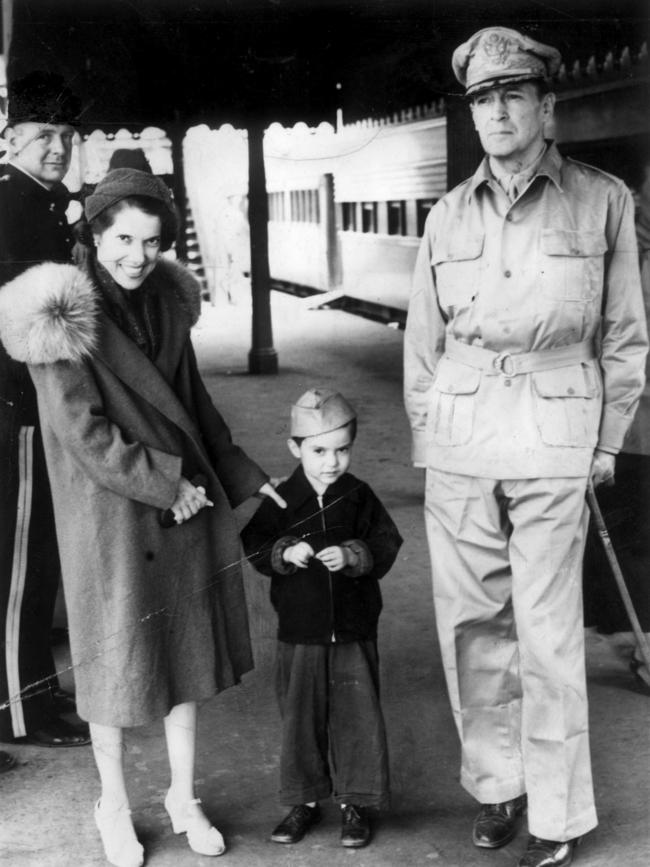
We’ve all heard the famous words of US General Douglas MacArthur “I shall return”. What is less known is that he said them, not in the Philippines as is commonly mistaken, but in South Australia.
The Supreme Commander of Allied Forces in the Southwest Pacific Area made the speech in relation to the Battle of the Philippines, the full version of which included the assertion “I came out of Bataan and I shall return”, on March 20, 1942.
He delivered that promise while transferring trains at Terowie railway station, 228km north of Adelaide.
His arrival at Terowie was supposed to be a secret but a throng of media and a crowd of about 3000 were present when he stepped down from the train.
The five-star general, casually dressed in a loose-hanging jacket and slacks, and wearing no medals, saluted the gathering.
The chief of staff of the United States Army during the 1930s, before playing a prominent role in the Pacific theatre during World War II, subsequently repeated the line “I shall return” in numerous speeches over many years.
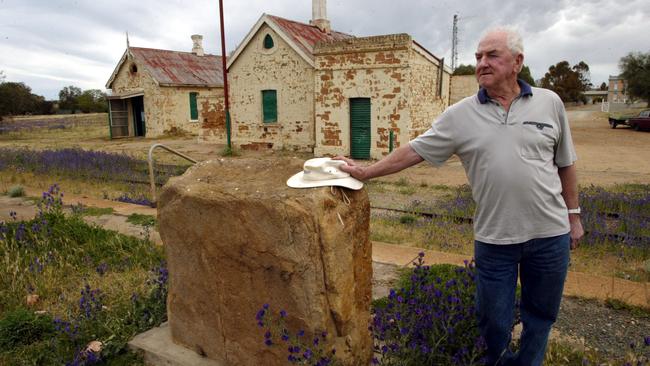
Terowie, formerly called Gottliebs Well and Shebbear, is still on the map and a popular venue for historians and rail buffs. It had a population of 131 in 2016.
Terowie railway station, located on the Gawler – Peterborough line, became an important junction when the narrow-gauge line from Peterborough opened but in later years it was reduced to a crossing loop.
The line closed permanently on July 16, 1988. The place of MacArthur’s speech is commemorated by a plaque on the disused railway platform.
14. Vivien Leigh and Sir Laurence Olivier – (1948)
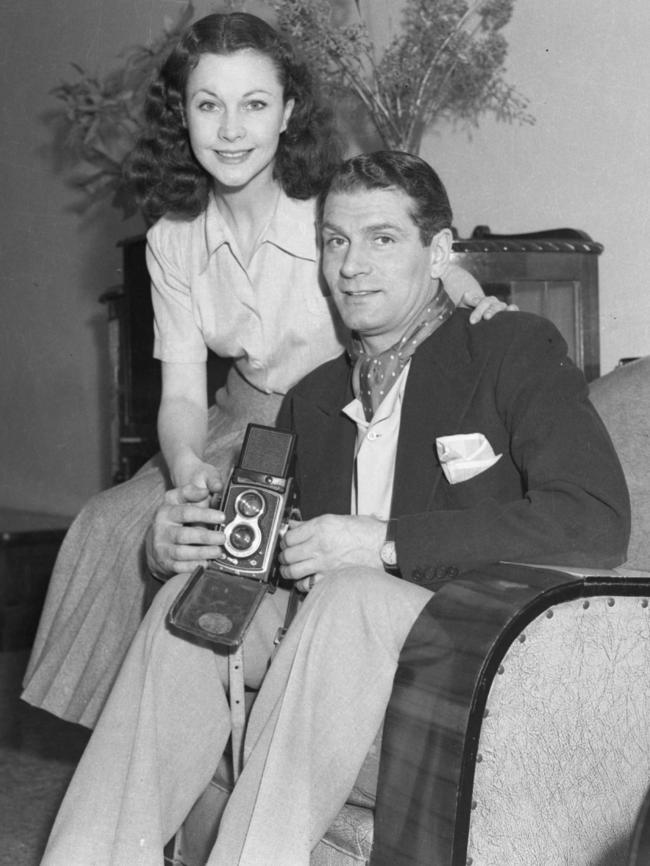
Along with Bogey and Bacall and Hepburn and Tracy, ‘Larry and Viv’ were among the most glamorous and famous film stars of their age but always regarded themselves as stage actors first and foremost.
The married couple toured Australia with the English Old Vic company in early 1948 performing together at Adelaide’s Theatre Royal in April in Sheridan’s School For Scandal.
Lady Olivier, better known as Scarlet O’Hara from Gone With the Wind, also appeared as Sabina in Thornton Wilder’s play The Skin of Our Teeth, while Olivier, knighted the previous year at the age of 40, appeared as the title character in Shakespeare’s Richard III.
The Oliviers flew into South Australia from Perth, landing at Parafield airport in late March 1948.
The Advertiser reported that, despite a sleepless night, Sir Laurence acted as host at a press conference in the stars’ suite at the South Australian Hotel and displayed “good-humoured imperturbability” despite his chair collapsing under him.
Theatrically tossing the wreckage into the fireplace he remarked: “There’s only one thing for it now. It’ll be useful anyway.”
The Oliviers paid the Theatre Royal a great compliment declaring it their favourite of all their venues of an extensive Australian tour.
“I think it’s charming,” Olivier said, before suggesting Adelaide would be a perfect venue for an Australian National Theatre.
“The theatre is a necessary part of the life of a city and a nation,” he added. “That is why I think it would be a marvellous thing if there were a National Theatre here. You should get together and make the state build one.
“It must not be too big a theatre. Acting is a sort of hypnotism. The player and the audience must meet. A performer cannot establish and retain contact with people sitting 100 yards from him in the 50th row – even Houdini couldn’t.”
15. Helen Keller – (1948)
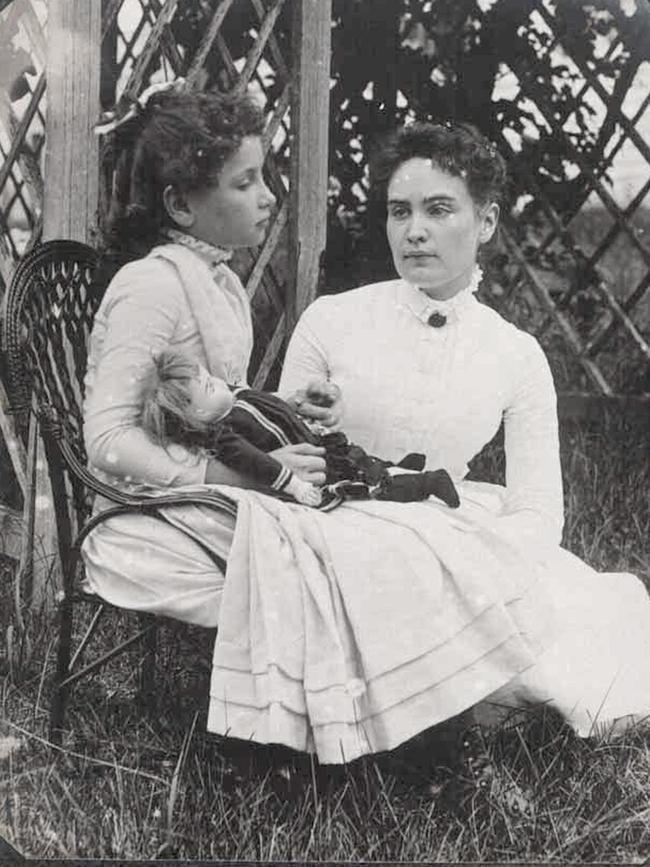
The American author, political activist, and lecturer – and the first deaf-blind person to earn a Bachelor of Arts degree – was one of the most famous people in the world when she flew into Adelaide on June 22, 1948.
Aged 68, and with her constant loyal companion Polly Thomson by her side, she spent three weeks staying at the South Australian Hotel on North Tce.
It was there she received a letter from a Mr John Stone asking for her advice about training for his youngest son, aged 15, who was a “victim of that dreadful disease”, Retinitis Pigmentosa, that leads to blindness.
In reply, Keller was reluctant to give direct advice about what his son could do for a career, saying she was no expert.
“There can be no definite rule for careers for the handicapped – each person must be judged by his ability and temperament in the same way as a normal person,” she wrote. She was much more effusive in an address to 100 schoolchildren at the Adelaide Town Hall on June 30.
“Indeed I am always happy when I am among young people. I cannot see your bright faces or hear your merry voices, but I feel your loving interest,” she said, in opening her address.
“It has been said that to attain what is noble is difficult, but the very effort to gain it creates character, strength and grit.
“Only through perseverance and overcoming obstacles can you accomplish anything worthwhile. We think little of what we win easily. It is struggle that gives victory its preciousness.”
The story of Keller, deaf-blind from birth in Alabama in 1880, and her teacher, Anne Sullivan, was made famous by Keller’s autobiography, The Story of My Life, published in 1903. The bestseller was later adapted for stage and then film as The Miracle Worker with Anne Bancroft and Patty Duke in the lead roles in both the stage production and the 1962 film.
A member of the Socialist Party of America, Keller campaigned for women’s suffrage, labour rights, and antimilitarism until her death, aged 87, in 1968.
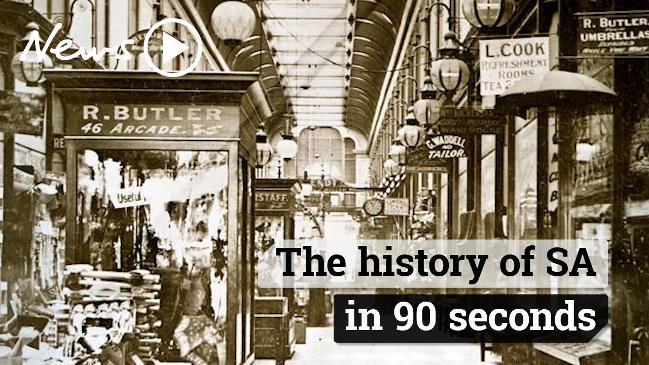
16. Maureen O’Hara – (1950)
The Hollywood star of How Green Was My Valley and Jamaica Inn spent several weeks in South Australia in 1950 filming Kangaroo (1952) a 20th Century Fox technicolor production directed by Lewis Milestone.
With a hefty $2 million budget, hopes were high for the movie, co-starring ‘Rat-pack’ member – and brother-in-law of President John F Kennedy – Peter Lawford.
Tyrone Power, Jean Simmons, Errol Flynn and Richard Widmark were all considered for roles before the cast was finalised and flew in to Adelaide prior to heading to a location base at Port Augusta.
O’Hara was given the red-carpet treatment after landing at Parafield airport and announcing to waiting media: “I have been able to get down to reading my part in the film only during the past two days. I feel it is going to be wonderful.”
A cavalcade with police escort saw tens of thousands line the streets for the drive to Adelaide, where she stayed at the South Australian Hotel on North Tce.
The Irish-born 30-year-old radiant redhead was officially greeted at the Adelaide Town Hall, attended a garden party at Government House and had dinner with Premier Tom Playford and his cabinet.
At Port Augusta, O’Hara lived in a three-bedroom house built especially for her.
With other members of the company and dozens of excited locals, she walked down to the Town Hall Theatre to watch her 1942 film To The Shores of Tripoli.
Sadly, her assessment of Kangaroo proved inaccurate.
There were serious issues on location, where strong winds forced much of the dialogue to be re-recorded.
Things could have been worse because an early draft of the screenplay had hordes of kangaroos wiping out a town, but this was cut after input from the Australian crew. But even so, the film was pilloried by critics, with one regarding it as “a mediocre western drama that lacks plot and originality”.
It was only fitting the world premiere in Port Augusta was delayed by a cut to the town’s power supply.
17. Tony Blair – (1954)
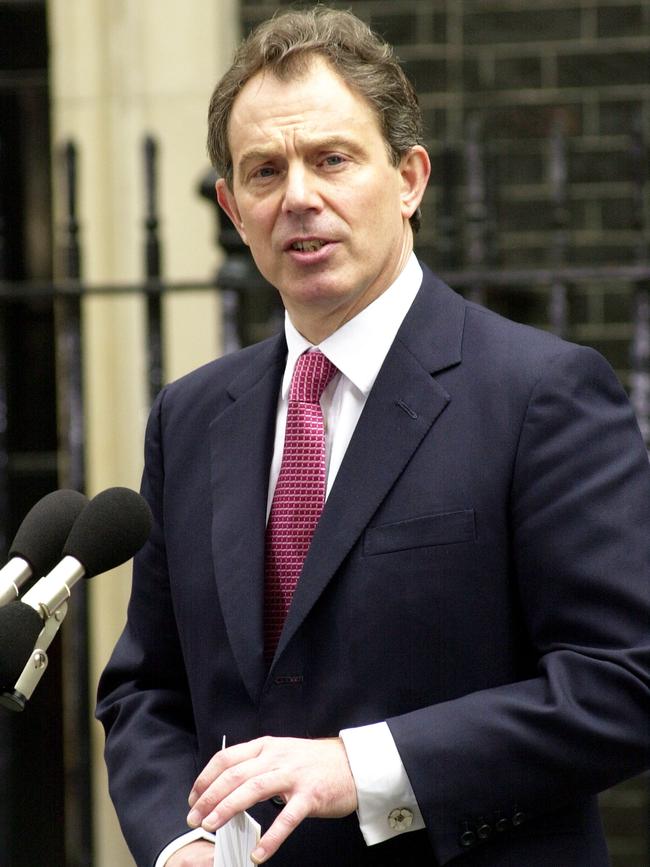
The former UK Prime Minister spent several pivotal years in Adelaide after his parents relocated from Edinburgh when he was 19 months of age in 1954.
The family, including older brother Bill, now Sir William Blair and a High Court judge, lived at Ormond Grove, Dulwich, conveniently close to the University of Adelaide where Blair’s father Leo lectured in law.
During the Blairs’ three-and-a-half years in South Australia, Hazel Blair gave birth to a third child, Sarah, before the family headed back to Scotland in the UK summer of 1958.
During her first visit to Adelaide in 2005, Blair’s wife Cherie Booth showed photos of the young Tony at play in the ‘City of Churches’ to a packed audience at the Adelaide Entertainment Centre.
She rather destroyed any theories that Adelaide and the state had a positive impact on the UK’s Prime Minister (1997-2007), saying her husband was “only a preschooler at the time” and “can’t remember a thing about Adelaide”.
However, there was one remnant of the time down under with his lifelong “love for the Sun”.
18. Paul Robeson – (1960)
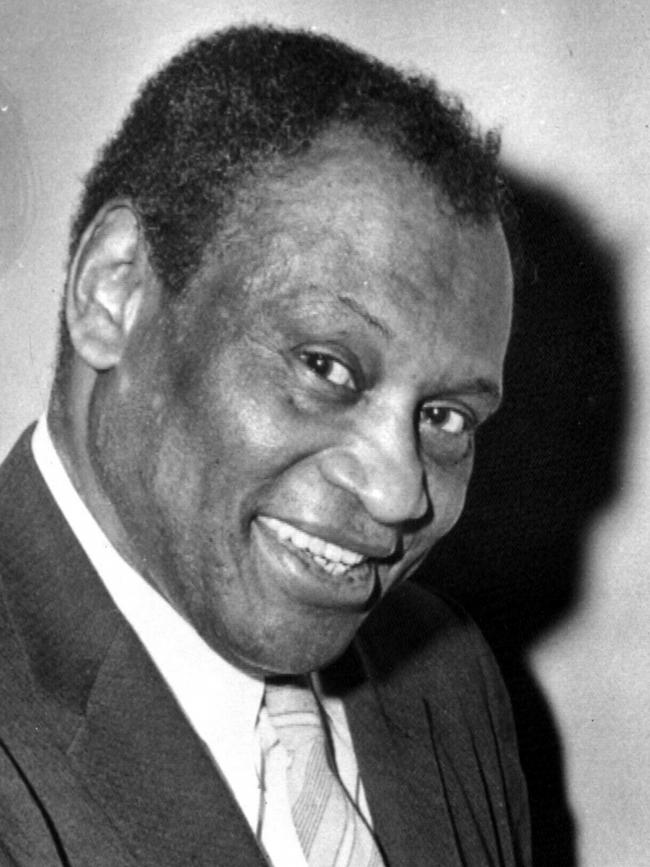
The famous African-American singer with the deep bass operatic voice, known best for his rendition of Ol’ Man River, was also a political activist, as a staunch supporter of unionism and the civil rights movement.
Invited to Australia in 1950 he had to wait a further 10 years to travel after the US government confiscated his passport because of his communist sympathies and open loyalty to the Soviet Union.
He performed two official concerts in Adelaide in late December 1960 and an unofficial concert at Port Adelaide in the Waterside Workers Hall, in front of an audience of 1200 wharfies, bank clerks, sailors and shop workers.
After an unaccompanied performance of more than two hours, Robeson received three cheers and a standing ovation that reportedly “lifted the roof”.
The man who once said “There’s no such thing as a backward human being, there is only a society which says they are backward” was handed an authentic woomera throwing stick as a gift.
Of his Adelaide concerts, The Advertiser’s music reviewer John Horner wrote Robeson was “simplicity itself on the stage … confining himself in every song to the simplest of the eternal verities”.
It was to be Robeson’s final overseas concert tour. Mental and physical health issues, and treatment including electroconvulsive therapy and large doses of prescription drugs, saw him live out the next 16 years in seclusion before a stroke in January 1976 claimed his life. He was 77.
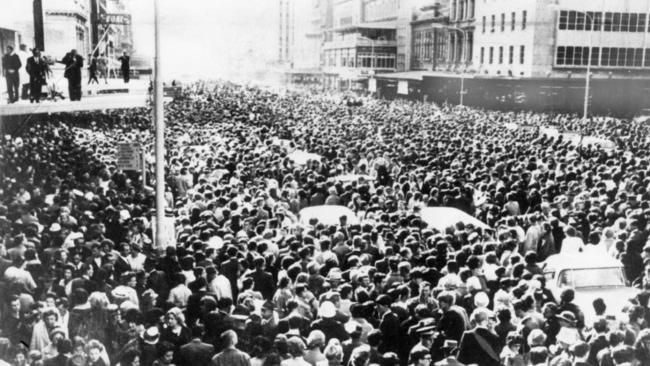
19. The Beatles – (1964)
They were in Adelaide for just 48 hours, but The Beatles, minus Ringo, sparked a social revolution in 1964 that changed the city forever.
John Lennon called it “Fabulous – the best reception ever” and he had the greatest vantage point of all, leaning out over the balcony at the Adelaide Town Hall.
What the 23-year-old musician could see up and down King William St, just before 1pm on Friday, June 12, 1964, was a surging sea of animated faces and tightly pressed bodies estimated to comprise more than half of the city’s population.
The 300,000 who crammed into the centre of Adelaide that day formed what is still regarded as the biggest reception The Beatles received anywhere in the world.
George Harrison, later a regular visitor to Adelaide for the Formula One Grand Prix, spoke of those two days in 1964 in an interview in 1995.
“We had no idea that so many people would be waiting for us,” he told a reporter. “After all, there were only 3000 people at the airport in New York, so why should there be 300,000 in Adelaide?
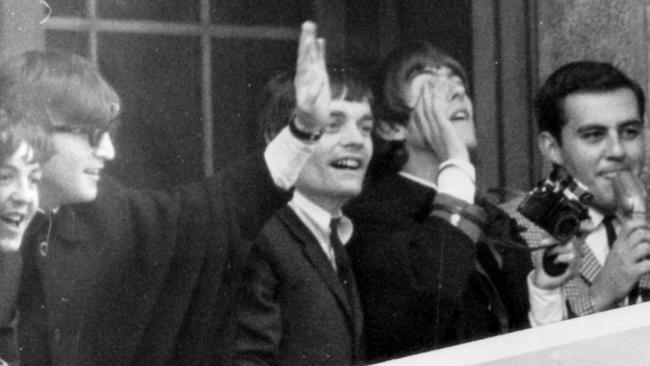
“It would have been really frightening if all the people hadn’t been so good-natured. There was a lot of screaming but a lot of smiles, too. It stuck in our minds as the most fantastic reception The Beatles ever had.”
DJ Bob Francis, who was responsible for getting the fab four to Adelaide after the promoter was keen to give it a miss, received a special memento for his efforts. A personal letter from the lads thanked him for everything he had done.
It included a note and signature from drummer Ringo Starr – replaced by Jimmy Nicol in Adelaide – who only joined up with the other band members in Melbourne.
Ringo had clearly been told, in eager tones by John, Paul and George, all about the magical scenes he had missed.
20. Luciano Pavarotti – (1965)
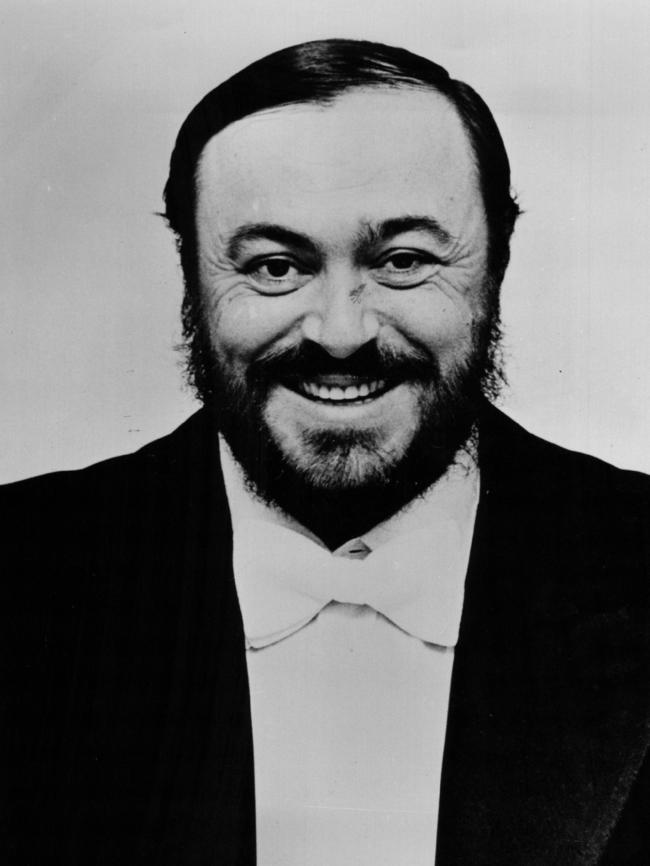
The great Italian tenor appeared in South Australia for one season only, but it wasn’t for the want of trying.
As a 30-year-old, the newly discovered opera star appeared opposite Joan Sutherland in a two-week season at Her Majesty’s Theatre, Grote St, in 1965.
In 1994, and to the outrage of South Australian fans, Pavarotti’s Adelaide concert with the World Festival Choir was transferred to Brisbane following an investigation by South Australian Police.
The sudden change in plan followed allegations about the charitable fundraising activities of the choir organisation. The claims, made by an Adelaide-based former national co-ordinator of the choir tour, were about the flow of profits to a United Nations fund for refugees.
What made it even more irksome for devotees was that the Adelaide Symphony Orchestra accompanied Pavarotti at concerts in Sydney, Melbourne and Brisbane but didn’t get the chance to play with him in its home base. Pavarotti’s planned performance at the Adelaide Entertainment Centre on November 24, 1999, was also cancelled after the singer had to return to Europe for personal reasons. Patrons received a full refund but no further opportunity to see him star before his retirement in 2005.
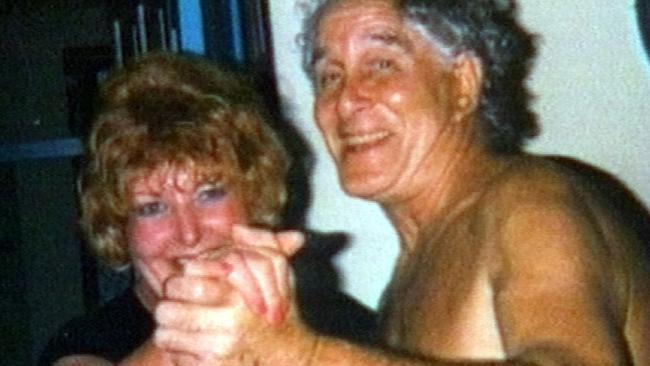
21. Ronnie Biggs – (1965)
“Welcome to Australia, Mr Furminger,” were the first words the Great Train Robber heard in Australia when arriving at Sydney airport. It was New Year’s Eve 1965.
If only the immigration officer had known Mr Furminger was the most wanted man in the world. Biggs was part of the gang that had pulled off the greatest theft of all time – the $7.3 million Great Train Robbery in England in 1963.
Biggs’s Sydney arrival was just five months after he had scaled a wall with a rope ladder at Wandsworth prison in London, having served 15 months of a 30-year sentence. From the top of the wall, Biggs dropped onto a waiting removal van that roared off into the night – beginning his 36 years on the run.
When wife Charmian joined him in Australia a few months later, the couple chose Adelaide to raise their two sons.
They settled at a boarding house at Grange, where Biggs took his leisure time at the Grange Hotel, swapping yarns with the blokes in the front bar, throwing darts and chatting up the barmaids with his cheeky chappie act.
He was just a regular, one of the lads, who worked as a carpenter and roofer, and also drove a bread delivery van around Alberton for a while and pulled petrol at a service station on Tapleys Hill Rd.
The Biggses’ third son, Farley, was born at Glenelg Community Hospital in April, 1967 but the long arm of the law was reaching out across 10,000 miles and an anonymous message from England told them it was time to leave Adelaide.
They moved to Melbourne before Biggs made a final escape to Brazil. He told People magazine his three years in Adelaide were “really happy times. I just hoped those days would never end”.
His family remained in Australia and Biggs was finally extradited to the UK in 2001, where he served a further eight years in jail. He died in 2013.
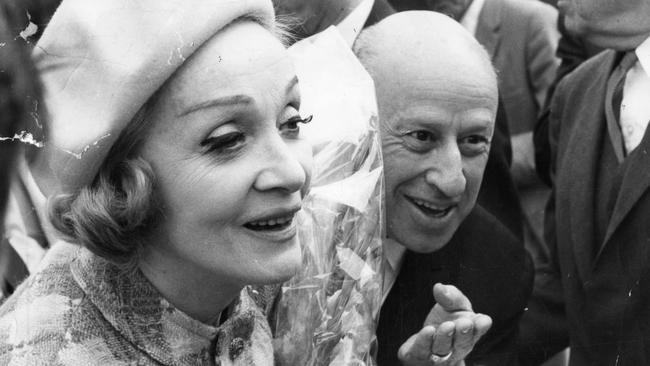
22. Marlene Dietrich – (1968)
When she was the world’s biggest cabaret star, Dietrich had probably not imagined playing the Adelaide Teachers College Theatre. But she did during the 1968 Adelaide Arts Festival.
Her fee was understood to be the largest ever paid to a Festival performer.
Dietrich, at 67, lived up to her reputation of being ‘difficult’ from the moment she arrived at Sydney airport, where customs searched her baggage. Weary from a 35-hour trip from Paris, she said she was “highly insulted” to be asked if she was carrying any heroin or marijuana.
“They searched my handbag,” she told a media throng in Adelaide. “I have been in many films and have carried microfilm in my boots and in my heels but I would certainly not put it in my handbag.”
A dressing room was built next to the stage on Kintore Ave to save the star’s legs from numerous backstage stairs. Tickets were $10 for the opening night to see her sing signature classics La Vie En Rose, Lili Marlene and Falling In Love.
She wore a coat with a lining of swan’s down and a $26,000 gown encrusted with diamonds and gold-plated beads. A review gushed: “Her lovely legs were encased in long leather boots and on her blonde hair sat a bright yellow bonnet.”
Dietrich left Adelaide four days later with a six-foot-long didgeridoo controversially acquired for her from the SA Museum by the Department of Aboriginal Affairs.
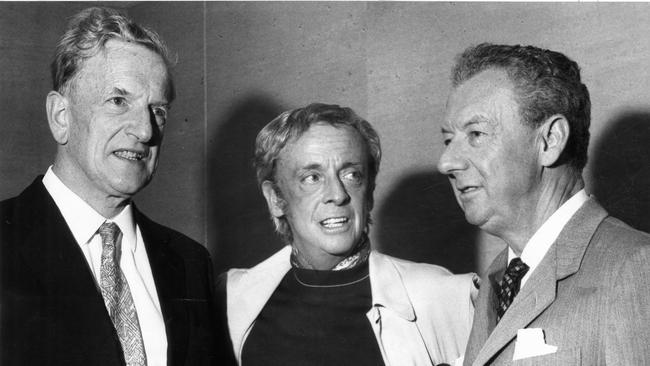
23. Benjamin Britten – (1970)
One barely recorded but memorable moment of Benjamin Britten’s only visit to South Australia was his trip down to Brighton for a concert performed by the children of Minda Special School.
On the day of her retirement, Minda principal Mrs Pat Kaufman told The Advertiser it was one of the highlights of her 28 years in charge.
“One of the children wrote to Benjamin Britten while he was on tour in Australia,” she said. “Much to the thrill of us all, he came along. We sang his Ceremony of Carols. He wept in front of us all.
“He hadn’t realised his music could speak to the disabled – it spoke to the very heart of our children.”
The great British composer was invited to Adelaide for the 1970 Arts Festival by Sir Robert Helpmann.
He arrived with his lifelong partner and international tenor Peter Pears, having recovered from a severe bout of bronchitis. Back home in the UK, Britten’s life had been saved by the actions of an Australian nurse. He had pledged to come Down Under as a tribute to her skill and care.
While in Adelaide, Britten conducted the SA Symphony Orchestra in a concert that included two of his own works and supervised performances of the English Opera Group, which he had helped create.
24. George Best – (1989)
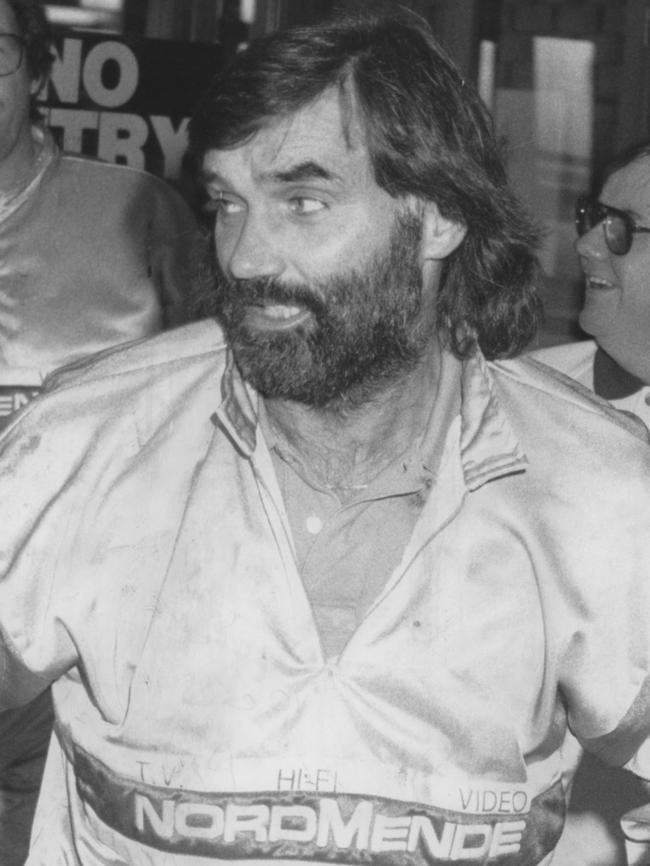
Glamorous British footballer George Best got into scrapes all over the world, mainly through his excessive and uncontrolled drinking, and it was no different during a speaking tour to Australia 1989.
The former Northern Ireland and Manchester United star delayed his return to the UK, flying in to Adelaide in July for a charity game for former state soccer player Neil Fuller.
Fuller, who had a leg amputated after an accident in a game, was hoping to represent Australia in the Paralympics in Japan. The charity game was intended as a fundraiser.
It was a generous act from Best to give of his time free of charge, but The Advertiser journalist Peter Hackett found a far less generous character in the Adelaide Casino toilets the night before the match.
Hackett claimed – and had the bruises to prove it – Best beat him up when he asked if he might be free for an interview while in town.
“The amiable George turned and, with a fierce look in his eyes, grabbed my coat sleeves and hauled me across the floor,” Hackett wrote later.
“Resorting to an old, foul soccer tactic, he began kicking me in the shins. He was like a man out of control.”
Best, then 43, was interviewed by Adelaide police over the incident, at his hotel during early Sunday morning in the presence of a lawyer.
He denied the allegations.
In the match next day, Best led his team to a 6-6 draw.
None of the 3000 crowd were concerned that Best changed sides to convert a penalty late in the game, or that there were 13 players on ‘his team’ in the second half.
Neither were they informed the superstar soccer player hadn’t been to bed until 5am that morning.
The next day Hackett engaged a lawyer and issued a writ through the Adelaide District Court, claiming $100,000 in damages, only to discover Best had flown out to London that morning on the first available flight.
He never returned.
Hackett gained some compensation, selling his story to Fleet Street.
Best had first come to Adelaide in 1967 as a 21-year-old as Manchester United defeated SA at Kensington Oval before a crowd of 20,000. Sixteen years later he played one game as a guest of West Adelaide, against Adelaide City.
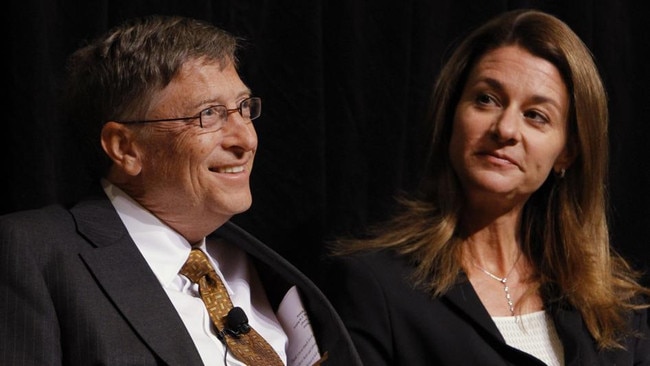
25. Bill Gates (and his celebrity equal, Melinda) – 2011)
The world’s richest man visited South Australia, or more specifically Kangaroo Island, in late 2011.
The Microsoft co-founder stayed at the exclusive and luxurious Southern Ocean Lodge on KI’s south coast, which was destroyed this month in the terrible bushfires.
Gates kept his visit secret.
A large helicopter on the tarmac at Kingscote airport, a couple of pilots loafing around town on standby, and some large limos with blacked-out windows were the only signs someone highly cashed-up was in town.
One couple who got close up and personal were Dave and Leeza Irwin, who run the popular bird sanctuary Raptor Domain on the island.
Gates, wife Melinda and their two children booked a private show of the birds of prey by the Irwins – related to the Queensland family of naturalists – but everything was hush-hush about who the guests would be.
Leeza didn’t recognise the software billionaire when he stepped from a black limousine surrounded by an entourage of security.
“The two young children (boy and girl) jumped out first and then this guy and finally a woman. I recognised her immediately,” Leeza says.
“I’d just seen her on TV on a show about eradicating malaria and thought how great would it be to meet her.
“And here she was, Melinda Gates, at our place! She just gave me the biggest hug.”
The Gates paid $200 for an exclusive hour-long show – but didn’t leave a tip.
“That family has given the world billions for good causes and we probably wouldn’t have accepted one (tip) in any case,” Leeza says.
